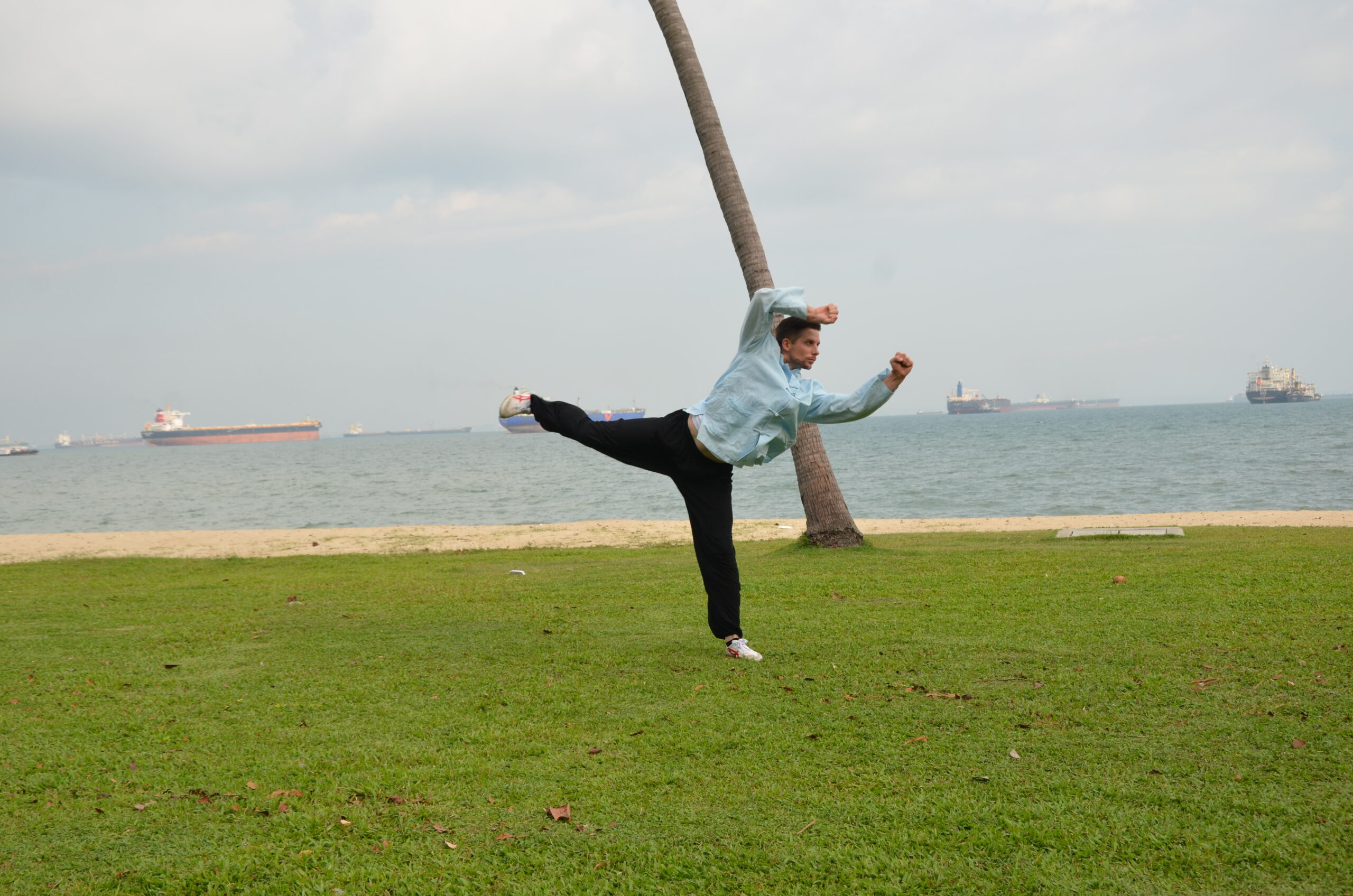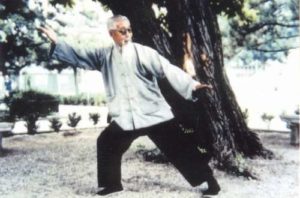“The Theory of Six Harmonies”
The Six Harmonies are divided into external and internal, each with its own explanation:
- External Six Harmonies:
- The back harmonizes with the shoulders.
- The shoulders harmonize with the elbows.
- The elbows harmonize with the hands.
- The waist harmonizes with the hips.
- The hips harmonize with the knees.
- The knees harmonize with the feet.
- Internal Six Harmonies:
- The brain harmonizes with the heart.
- The heart harmonizes with the mind (intent).
- The mind harmonizes with the breath (qi).
- The breath harmonizes with the strength.
- The strength harmonizes with the tendons.
- The tendons harmonize with the blood.
These internal and external harmonies are interconnected. When performing martial arts, the movement of the elbow and hand is driven by the back, which pushes the shoulders, the shoulders push the elbows, and the elbows push the hands. Similarly, when stepping forward, the waist drives the hips, the hips drive the knees, and the knees drive the feet. The back, shoulders, elbows, and hands belong to the upper body, while the waist, hips, knees, and feet belong to the lower body. The Six Harmonies of the upper and lower body must be coordinated: hands and feet, elbows and knees, shoulders and hips, back and waist.
- The hands and feet must move together. If they are not coordinated, as the ancients said: “If the hands and feet do not move, you cannot defeat an opponent; if the feet move but the hands do not, you will surely lose.”
- The elbows and knees must align. If they do not, the body will lean forward or backward.
- The shoulders and hips must be straight. If they are not, the body will tilt to the left or right.
- The back and waist must be flexible. If they are not, the body will lack the softness and fluidity required for effective movement.
The hands and feet must move together, the elbows and knees must align, the shoulders and hips must be straight, and the back and waist must be flexible. These elements must be in harmony with each other. When the hips move, the waist turns; when the shoulders drop, the back moves; when the knees advance, the elbows follow; when the feet step, the hands follow. The upper and lower body must be connected as one, without leaning forward, backward, or tilting to the sides. As the ancients said: “Your movements must be fast, your posture like a standing ape, and your power like a fierce tiger or Mount Tai.”
The movement of the limbs is governed by the brain. The brain communicates with the heart, and together they produce intelligence. Therefore, the movement of the heart is the intent (yi). The intent includes forward intent, backward intent, cutting intent, and guarding intent. These four intents are interconnected and form a decisive intent. When the heart is upright and the intent is decisive, they must be in harmony. The intent generates the breath (qi), and the breath drives the strength. The breath and intent are interconnected, so they must be in harmony. The manifestation of strength is seen in the tendons, and the tendons rely on the blood. Therefore, the tendons and blood must be in harmony.
The breath has the power to drive, the strength has the ability to execute, the tendons have the method to absorb fluids, and the blood has the ability to circulate throughout the body. If the brain is confused, the heart is anxious, and the intent is disordered, the breath cannot be controlled, the strength cannot be used, the limbs will move chaotically, the steps will be misaligned, and the opponent will take advantage of the situation, leading to certain defeat. As martial artists, we must not recklessly use our breath in sudden situations. If a martial artist abandons the breath, they must rely on strength. The brain, heart, breath, and intent are internal and manifest in the facial expressions: joy, anger, fear, and sorrow. The strength, tendons, fluids, and blood are external and manifest in the movement of the limbs and the circulation of the blood. When the blood circulates throughout the body, the breath naturally flows and gathers without effort, demonstrating the unity of internal and external harmony, achieving the Six Harmonies.
Explanation
1. External Six Harmonies (外六合):
These refer to the physical coordination of the body:
- Back and Shoulders: The back provides the foundation for shoulder movement.
- Shoulders and Elbows: The shoulders drive the elbows.
- Elbows and Hands: The elbows drive the hands.
- Waist and Hips: The waist drives the hips.
- Hips and Knees: The hips drive the knees.
- Knees and Feet: The knees drive the feet.
This harmony ensures that the body moves as a unified whole, with power generated from the core (waist and back) and transmitted through the limbs.
2. Internal Six Harmonies (内六合):
These refer to the mental and energetic coordination:
- Brain and Heart: The brain (thought) and heart (emotion) must be aligned.
- Heart and Intent: The heart drives the intent (yi), which is the focused will to act.
- Intent and Breath: The intent guides the breath (qi), which is the vital energy.
- Breath and Strength: The breath generates physical strength.
- Strength and Tendons: The strength is transmitted through the tendons.
- Tendons and Blood: The tendons rely on the blood for nourishment and energy.
This harmony ensures that the mind, energy, and body are unified, allowing for efficient and powerful movement.
3. Key Principles:
- Coordination: The upper and lower body must work together seamlessly.
- Alignment: Misalignment (e.g., elbows and knees not matching) leads to imbalance and vulnerability.
- Flexibility: The back and waist must be flexible to allow fluid movement.
- Intent and Breath: The mind (intent) and breath (qi) are the sources of power and must be in harmony.
- Unity of Internal and External: The physical (external) and mental/energetic (internal) aspects must be unified for effective martial arts practice.
4. Practical Application:
- In martial arts, the Six Harmonies are essential for generating power, maintaining balance, and executing techniques effectively.
- For example, in a punch, the power starts from the back, travels through the shoulders and elbows, and is delivered through the fist. Simultaneously, the intent and breath guide the movement, ensuring maximum efficiency and force.
5. Philosophical Significance:
- The Six Harmonies reflect the Taoist and Confucian principles of balance, harmony, and unity between mind, body, and spirit.
- They emphasize the importance of internal cultivation (mind and breath) alongside external training (physical techniques).
The Six Harmonies are a cornerstone of Chinese martial arts, emphasizing the integration of internal and external elements to achieve optimal performance. By mastering the coordination of mind, breath, and body, martial artists can move with power, precision, and fluidity. This concept not only applies to martial arts but also reflects broader philosophical principles of harmony and balance in life.




